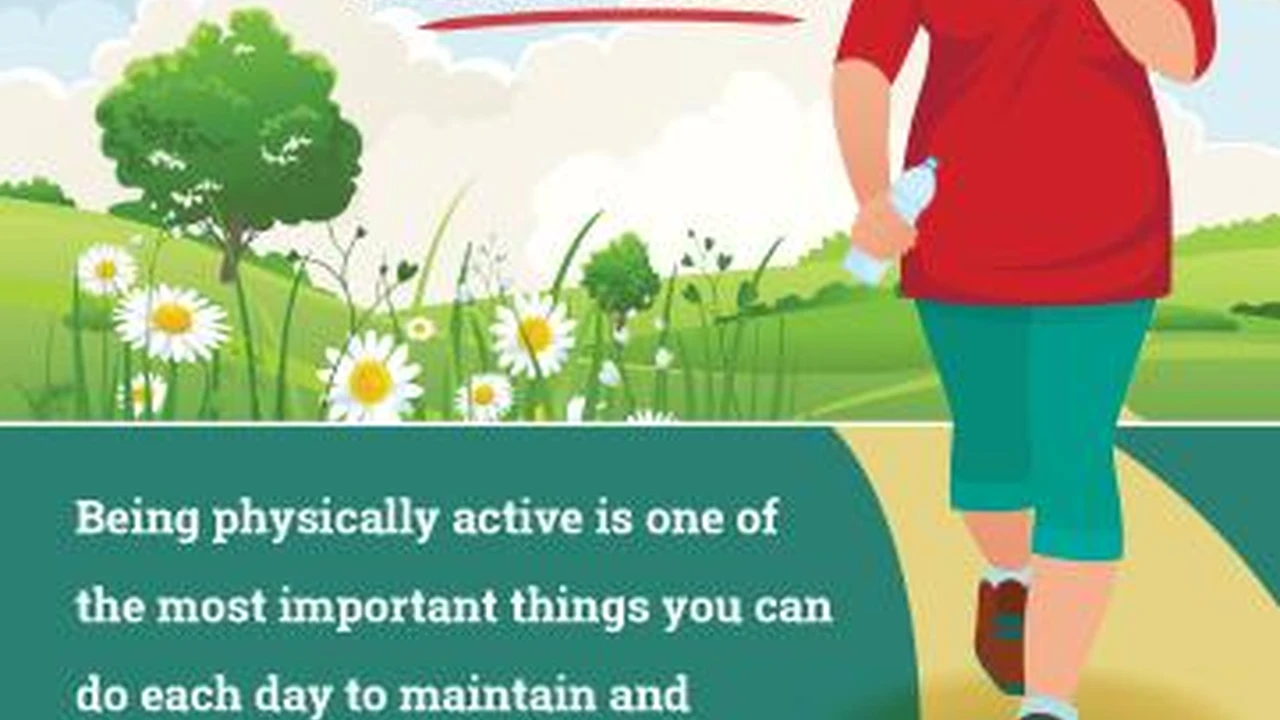How to Reduce Your Risk of Stroke
Sample meta description.

Understanding Stroke Risk Factors and Prevention Strategies
Hey everyone! Let's talk about something super important: stroke prevention. Strokes are scary, but the good news is that a lot of the risk factors are things you can actually control. We're going to break down the main things to watch out for, and how to tweak your lifestyle to keep those risks as low as possible. Think of this as your ultimate guide to a healthier, stroke-free future!
Controlling High Blood Pressure for Stroke Prevention
High blood pressure, or hypertension, is a HUGE risk factor for stroke. Seriously, it's like the number one villain in this story. When your blood pressure is consistently too high, it puts extra strain on your blood vessels, making them more likely to weaken and burst or become blocked. The good news? You can absolutely manage it!
How to Tackle High Blood Pressure:
- Diet: Cut back on sodium (salt!). Seriously, read those labels. Processed foods are loaded with it. Load up on fruits, veggies, and whole grains. The DASH diet (Dietary Approaches to Stop Hypertension) is a great guideline.
- Exercise: Aim for at least 30 minutes of moderate-intensity exercise most days of the week. That could be brisk walking, cycling, swimming – whatever gets your heart pumping.
- Medication: If lifestyle changes aren't enough, your doctor might prescribe medication. Take it as directed! Don't skip doses!
- Stress Management: Stress can raise blood pressure. Find healthy ways to manage stress, like yoga, meditation, or spending time in nature.
- Regular Monitoring: Keep tabs on your blood pressure. You can buy a home monitor or visit a pharmacy to get it checked. Knowing your numbers is half the battle.
The Role of Cholesterol Management in Reducing Stroke Risk
High cholesterol, especially LDL cholesterol (the "bad" kind), can lead to plaque buildup in your arteries. This plaque can narrow the arteries, making it easier for blood clots to form and block blood flow to the brain, causing a stroke.
Lowering Your Cholesterol:
- Diet: Limit saturated and trans fats. These are found in fatty meats, fried foods, and processed snacks. Choose lean protein sources, like chicken and fish.
- Fiber: Eat plenty of fiber-rich foods, like oatmeal, beans, and fruits. Fiber helps lower cholesterol levels.
- Exercise: Regular exercise can help raise HDL cholesterol (the "good" kind) and lower LDL cholesterol.
- Medication: If diet and exercise aren't enough, your doctor might prescribe statins or other cholesterol-lowering medications.
The Link Between Smoking and Stroke Risk: Quitting Strategies
Smoking is terrible for your health, and it significantly increases your risk of stroke. It damages blood vessels, raises blood pressure, and makes blood more likely to clot. Quitting smoking is one of the best things you can do for your health, and it will dramatically reduce your stroke risk.
Quitting Smoking:
- Nicotine Replacement Therapy: Patches, gum, lozenges, and inhalers can help reduce cravings and withdrawal symptoms.
- Medication: Your doctor can prescribe medications that help reduce cravings and withdrawal symptoms.
- Support Groups: Joining a support group can provide you with encouragement and support from others who are trying to quit.
- Counseling: A therapist or counselor can help you develop coping strategies for dealing with cravings and triggers.
- Cold Turkey: Some people find that the best way to quit is to simply stop smoking altogether.
The Importance of a Healthy Diet for Stroke Prevention
What you eat plays a huge role in your overall health, including your risk of stroke. A healthy diet can help lower blood pressure, cholesterol, and weight, all of which are important for stroke prevention.
Key Dietary Recommendations:
- Fruits and Vegetables: Aim for at least five servings a day. They're packed with vitamins, minerals, and fiber.
- Whole Grains: Choose whole grains over refined grains. They're higher in fiber and nutrients.
- Lean Protein: Choose lean protein sources, like chicken, fish, beans, and tofu.
- Healthy Fats: Choose healthy fats, like those found in olive oil, avocados, and nuts.
- Limit Sugar and Processed Foods: These can contribute to weight gain, high blood pressure, and high cholesterol.
The Benefits of Regular Exercise in Reducing Stroke Risk
Regular exercise is another key ingredient in stroke prevention. It helps lower blood pressure, cholesterol, and weight, and it also improves blood flow and reduces stress.
Exercise Recommendations:
- Aerobic Exercise: Aim for at least 30 minutes of moderate-intensity aerobic exercise most days of the week.
- Strength Training: Include strength training exercises at least twice a week.
- Flexibility Exercises: Stretch regularly to improve flexibility and range of motion.
- Find Activities You Enjoy: The best exercise is the kind you'll actually do!
The Role of Weight Management in Stroke Prevention
Being overweight or obese increases your risk of stroke. Losing even a small amount of weight can make a big difference in your overall health and reduce your stroke risk.
Weight Management Strategies:
- Healthy Diet: Focus on eating a healthy, balanced diet.
- Regular Exercise: Aim for at least 30 minutes of moderate-intensity exercise most days of the week.
- Portion Control: Pay attention to portion sizes.
- Stress Management: Stress can contribute to weight gain.
- Sleep: Get enough sleep. Lack of sleep can disrupt hormones that regulate appetite.
Managing Diabetes to Minimize Stroke Risk
Diabetes increases your risk of stroke. High blood sugar levels can damage blood vessels and make them more likely to become blocked.
Managing Diabetes:
- Blood Sugar Monitoring: Check your blood sugar levels regularly.
- Medication: Take your medication as directed by your doctor.
- Healthy Diet: Follow a healthy diet plan.
- Regular Exercise: Exercise regularly.
- Foot Care: Take good care of your feet.
Addressing Atrial Fibrillation (AFib) to Prevent Stroke
Atrial fibrillation (AFib) is a type of irregular heartbeat that can increase your risk of stroke. In AFib, the upper chambers of the heart (atria) beat irregularly and out of sync with the lower chambers (ventricles). This can lead to blood clots forming in the heart, which can then travel to the brain and cause a stroke.
Managing AFib:
- Medication: Your doctor may prescribe medications to control your heart rate and rhythm, and to prevent blood clots.
- Cardioversion: This procedure uses electrical shocks or medication to restore a normal heart rhythm.
- Catheter Ablation: This procedure uses heat or cold energy to destroy the tissue in the heart that is causing the irregular heartbeat.
Understanding the Warning Signs of Stroke and Acting FAST
Knowing the warning signs of stroke and acting FAST can save a life. The acronym FAST stands for:
- Face: Is one side of the face drooping?
- Arms: Can the person raise both arms equally?
- Speech: Is the person's speech slurred or difficult to understand?
- Time: If you observe any of these signs, call 911 immediately. Time is critical when it comes to stroke treatment.
The Role of Hydration in Maintaining Healthy Blood Flow and Preventing Stroke
Staying properly hydrated is essential for maintaining healthy blood flow and preventing stroke. Dehydration can thicken the blood, making it more likely to clot. Aim to drink plenty of water throughout the day.
Hydration Tips:
- Drink Water Regularly: Carry a water bottle with you and sip on it throughout the day.
- Eat Hydrating Foods: Fruits and vegetables like watermelon, cucumbers, and celery are high in water content.
- Avoid Sugary Drinks: Sugary drinks can dehydrate you.
- Listen to Your Body: Drink when you're thirsty.
Stress Reduction Techniques for Lowering Stroke Risk
Chronic stress can raise blood pressure and increase your risk of stroke. Finding healthy ways to manage stress is important for stroke prevention.
Stress Reduction Techniques:
- Yoga: Yoga can help reduce stress and improve flexibility.
- Meditation: Meditation can help calm your mind and reduce stress.
- Deep Breathing Exercises: Deep breathing exercises can help lower your heart rate and blood pressure.
- Spending Time in Nature: Spending time in nature can be very relaxing and stress-reducing.
- Hobbies: Engaging in hobbies you enjoy can help take your mind off of stressful things.
Recommended Products for Stroke Prevention and Management
Okay, let's talk about some products that can help you in your stroke prevention journey. Remember, these are just tools, and they work best when combined with a healthy lifestyle and guidance from your doctor.
Blood Pressure Monitors: Keeping Track of Your Numbers
Why You Need One: As we discussed, high blood pressure is a major risk factor. A home blood pressure monitor allows you to track your blood pressure regularly and share the data with your doctor. This helps you and your doctor make informed decisions about your treatment plan.
Product Recommendations:
- Omron Evolv: This is a wireless, upper-arm blood pressure monitor that's super easy to use. It connects to your smartphone via Bluetooth, so you can track your readings over time. It's priced around $70-$100.
- Withings BPM Connect: Another excellent wireless option, the Withings BPM Connect is known for its sleek design and accuracy. It also connects to your smartphone and stores your readings in the cloud. It's typically priced around $100-$130.
- Pros and Cons Comparison: The Omron Evolv is generally considered slightly more accurate, while the Withings BPM Connect has a more modern design and integrates with other Withings health devices. Both are great options, so it comes down to personal preference.
Usage Scenario: Check your blood pressure at the same time each day (morning and evening are good choices) and record the readings. Share the data with your doctor during your appointments.
Air Purifiers: Improving Air Quality and Reducing Inflammation
Why You Might Need One: While not a direct stroke prevention tool, air pollution can contribute to inflammation and cardiovascular problems. An air purifier can help remove pollutants from your indoor air, creating a healthier environment.
Product Recommendations:
- Levoit Core 300S: This is a compact and affordable air purifier that's great for small rooms. It features a three-stage filtration system that removes dust, pollen, and other allergens. It's priced around $70-$90.
- Coway Airmega 400S: This is a larger, more powerful air purifier that's suitable for larger rooms. It features a multi-stage filtration system and can even remove odors and VOCs (volatile organic compounds). It's typically priced around $200-$250.
- Pros and Cons Comparison: The Levoit Core 300S is a budget-friendly option for smaller spaces, while the Coway Airmega 400S is a more comprehensive solution for larger areas. Consider the size of your room and your specific needs when choosing an air purifier.
Usage Scenario: Place the air purifier in a room where you spend a lot of time, such as your bedroom or living room. Run it continuously to maintain clean air.
Smartwatches and Fitness Trackers: Monitoring Activity and Heart Health
Why You Need One: Staying active is crucial for stroke prevention. A smartwatch or fitness tracker can help you monitor your activity levels, heart rate, and sleep patterns, providing valuable insights into your overall health.
Product Recommendations:
- Apple Watch Series 8: The Apple Watch is a feature-rich smartwatch that offers advanced health tracking capabilities, including heart rate monitoring, ECG, and fall detection. It's priced starting around $400.
- Fitbit Sense 2: The Fitbit Sense 2 is a fitness tracker that focuses on health and wellness. It tracks your activity levels, heart rate, sleep, and stress levels. It's priced around $300.
- Pros and Cons Comparison: The Apple Watch is a more versatile device with a wider range of features, while the Fitbit Sense 2 is more focused on health tracking. The Apple Watch requires an iPhone, while the Fitbit is compatible with both iOS and Android.
Usage Scenario: Wear the smartwatch or fitness tracker throughout the day to track your activity levels. Use the data to set goals and stay motivated. Share the data with your doctor during your appointments.
Omega-3 Supplements: Supporting Heart Health
Why You Might Need Them: Omega-3 fatty acids have been shown to have numerous health benefits, including supporting heart health and reducing inflammation. While you can get omega-3s from foods like fatty fish, some people may benefit from taking supplements.
Product Recommendations:
- Nordic Naturals Ultimate Omega: This is a high-quality fish oil supplement that provides a concentrated dose of omega-3 fatty acids. It's typically priced around $30-$40 per bottle.
- Sports Research Triple Strength Omega-3 Fish Oil: This is another excellent fish oil supplement that's known for its purity and potency. It's priced around $25-$35 per bottle.
- Pros and Cons Comparison: Both Nordic Naturals and Sports Research are reputable brands that offer high-quality omega-3 supplements. Choose the one that best fits your budget and preferences.
Usage Scenario: Take the omega-3 supplement as directed on the label. It's best to take it with food to improve absorption.
Important Disclaimer:
Always consult with your doctor before starting any new supplements or making significant changes to your diet or exercise routine. The information provided here is for informational purposes only and should not be considered medical advice.
:max_bytes(150000):strip_icc()/277019-baked-pork-chops-with-cream-of-mushroom-soup-DDMFS-beauty-4x3-BG-7505-5762b731cf30447d9cbbbbbf387beafa.jpg)






